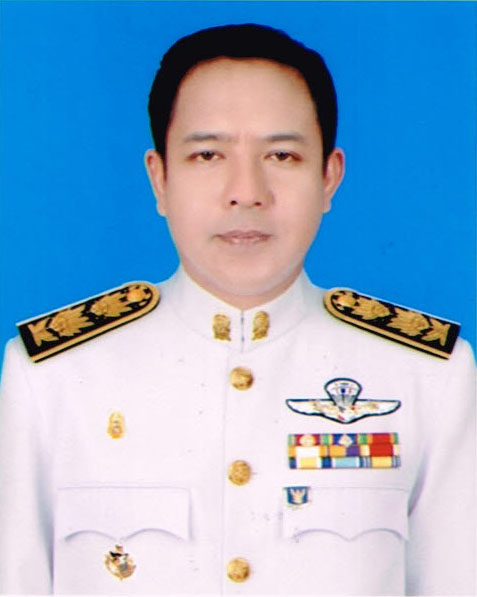History Of SVC
-
History of Songkhla Vocational College
Songkhla Vocational College was formerly located on land belonging to the state property with the area of 7 rai and 6.8 square wa. Later, in 1975, the college obtained permission from the State Railway of Thailand to use the area of 4 rai, 1 ngan, and 50 square wa. Today, the college currently has a total area of 11 rai, 1 ngan, and 56.8 square wa.
On September 1st, 1938, the college was named as “Songkhla Tailoring School” under the Department of Academic Administration, Ministry of Religious Affairs. At the time, the students graduating in Grade 4 were able to join the classes majoring in tailoring and weaving. However, the classes were held separately. Tailoring classes were taught on the ground floor of Provincial Education Officer of Songkhla’s House (currently, the Boromarajonani College of Nursing Songkhla).
In 1939, the school received the budget for the construction of a school building and a weaver workshop on the land on which the college is currently located. Later, the two majors were moved into the same area.
In 1940, the school secured the budget for the construction of another school building and another weaver workshop.
In 1947, the school name was changed to “Songkhla Women’s Training School”, under the Division of Craftmanship School, Department of Vocational Education, Ministry of Education. The school provided education only for women, called “Secondary Vocational Education” allowing the students graduating from grade 4 to enroll in the program.
In 1949, the course was extended into 2 levels, including Secondary Vocational Education (2-year program), and High Vocational Education (3-year program). The students graduating from grade 9 or equivalent were allowed to study for the High Vocational Education Program. The total study of 5 years for completing the entire program was equivalent to the study in the secondary and high school program.
In 1956, the course was extended for 3 more years and the name changed to High Vocational School, allowing the students graduating from grade 12 or equal to enroll. The secondary education was cancelled.
In 1961, the curriculum was modified under the National Education Plan (1960) and changed into the high school for vocational program. Students graduating from grade 12 or equivalent could enroll in this 3-year program.
In 1964, the school participated in the Institute Improvement Project of the Department of Vocational Education and UNICEF. The project supported schools and teachers to revise and improve the curriculum in different subjects, and also in supplying school materials. Four majors were opened; (1) Fabric and weaving, (2) Food and Nutrition, (3) Home Economics, and (4) Arts and Crafts.
In 1965, schoolboys were accepted.
In 1973, the school name was changed to Songkhla Vocational School.
In 1975, the school asked for permission from the State Railway of Thailand to use their land at the area of 4 rai, 1 ngan, and 50 square wa. The total area of the school was 11 rai, 1 ngan, and 56.8 square wa.
In 1976, Educational Management was used as a high school program, majoring in Home Economics. The students holding the Vocational Certificate could enroll in the High Vocational Certificate program. At this time, the school became Songkhla Vocational College, Campus 2, and merged with Songkhla Technical School, which was Campus 1.
In 1978, the college opened a Commerce program.
In 1979, Songkhla Vocational College, Campus 2 separated itself to Songkhla Vocational College.” Students majoring in the Commerce program were transferred from Songkhla Technical School Campus 1.
In 1982, the college opened an Applied Art program. Students were accepted into the program from the beginning of the academic year of 1984.
In 1984, the college offered Technical and Vocational Certificate in 4 majors; (1) General Home Economics, (2) Business Computer, (3) Service Industry, and (4) Accounting.
In 1983 – 1989, the college received the budget for constructing three new 4-story buildings, for students in Home Economics, Food and Nutrition, and Fabric and Clothing majors. Currently, these are buildings 2, 3, and 4.
In 1987, the college received the budget for the construction of the auditorium in Honor of His Majesty the King and school building 6.
In 1987 – 1989, the college received the budget to construct the administration building.
In 1990, the college received the budget to build a 4-story residential flat with 14 units for teachers.
In 1994, the college got the budget for a 4-story residential flat with 14 units for workers and janitors. Also, Vocational Certificate in Public Relations was offered.
In 1995, the college received the budget of 400,000 baht from the Member of the House of Representatives, Democrat Party, to build a public parent hall. The hall has been reconstructed as a multipurpose laboratory building with educational equipment (Hotel building). Also, the college offered Vocational Certificate in tourism industry and began the dual vocational training in hotel subjects. At the same time, High Vocational Certificate degree in accounting (part time program) was opened.
In 1996, the college received the budget of 5,695,000 baht to build the school building and another 4-story residential flat with 14 units for teachers. The budget of 28,800,000 baht for constructing a 6-story lecture and laboratory building was received later this year. Currently, this building is in Singhanakorn Technology and Management College (Rat Prathanrasnikorn). At the same time, the High Vocational Certificate degree in Marketing (Part-time program) was started.
In 1997, the college received the budget of 8,090,000 baht for building an academic resource center. Presently, this building is in Singhanakorn Technology and Management College (Rat Prathanrasnikorn).
In 1998, Songkhla Vocational College opened the second campus, Singhanakorn (Rat Prathanrasnikorn) Campus, located in Moang Ngam sub-district, Singhanakorn, Songkhla. The area of 25 rai was donated by Dr. Rat Prathanrasnikorn while the college bought an additional area of 1 rai, 3 ngan, and 36 square wa for the campus. The total area of the campus was, now, 26 rai, 3 ngan, and 36 square wa.
In 2004, the college received the budget of 19,790,000 baht for constructing a multipurpose laboratory building under the name of 88 years Rat Prathanrasnikorn. Currently, this building is in Singhanakorn Technology and Management College (Rat Prathanrasnikorn).
In 2007, the college had a product distribution building constructed by the Foundation of Rat Prathanrasnikorn at the cost of 815,000 baht. Presently, this building is in Singhanakorn Technology and Management College (Rat Prathanrasnikorn).
In 2008, the college received the budget of 6,392,201.09 baht to construct the 70 Years Lecture Building.
In 2009, Songkhla Vocational College, Singhanakorn (Rat Prathanrasnikorn) Campus, separated itself and established a new college named Singhanakorn Technology and Management College (Rat Prathanrasnikorn). The first director of the college was Mr. Surapol Eiamsamang.
In 2010, Songkhla Vocational College secured a budget of 25,000,000 baht to build a multipurpose laboratory building with educational equipment (Hotel Operating Building).
In 2014, the college received a 9,094,000 baht budget for the construction an academic resource center (Lecture Building 7) with the utility space of 1,088 square meters.
In 2015, the college constructed another academic resource center (Lecture Building 1) including educational equipment with the utility space of 1,152 square meters. The budget for this building was recouped the college’s revenue at the amount of 9,990,000 baht.
In 2017, the college used the budget of 2,067,400 baht for building a Food Operation Center together with workshop equipment.
At present, Songkhla Vocational College provides regular curriculum in Vocational Certificate degrees in 5 programs consisting of (1) Commerce, (2) Fine Arts, (3) Home Economics, Food and Nutrition Major, (4) Home Economics, Home Economics Major, and (5) Tourism Industry. At the same time, there are 4 programs in High Vocational Certificate degrees including (1) Business Administration, (2) Fine Arts, (3) Home Economics, and (4) Tourism Industry. Also, Dual Vocational Training in High Vocational Certificate degrees is provided including (1) Business Administration, (2) Home Economics, and (3) Tourism Industry.












